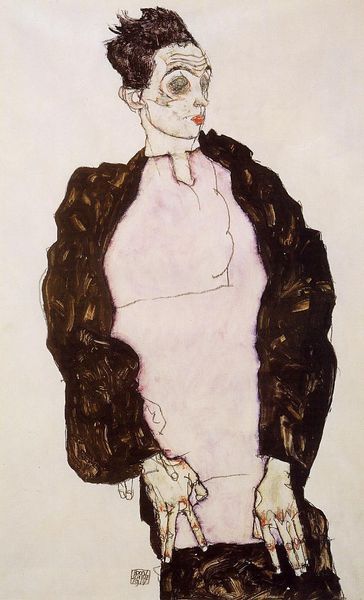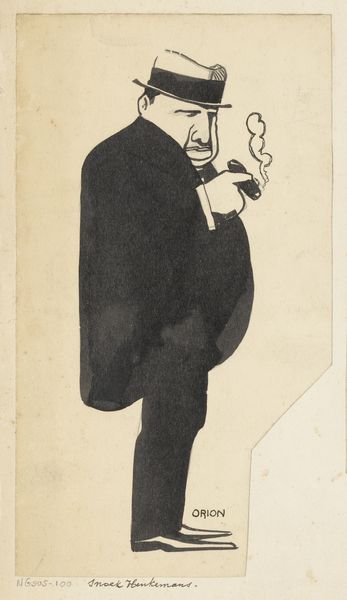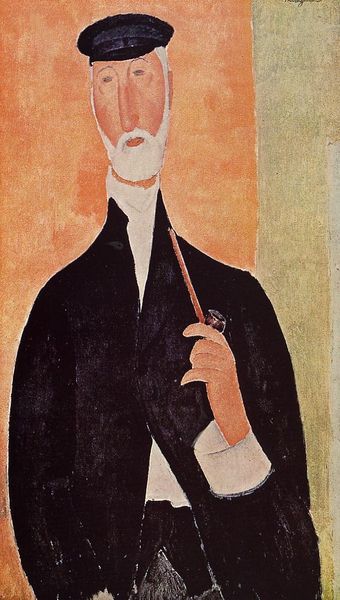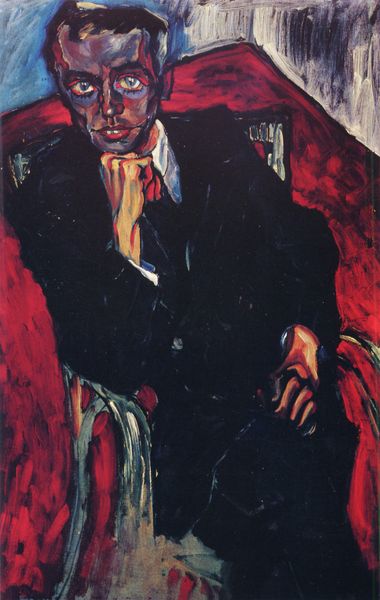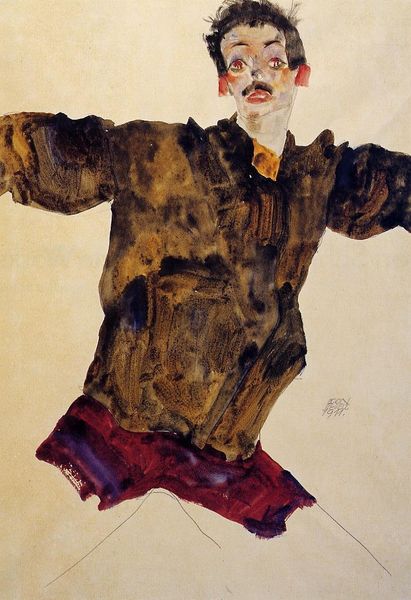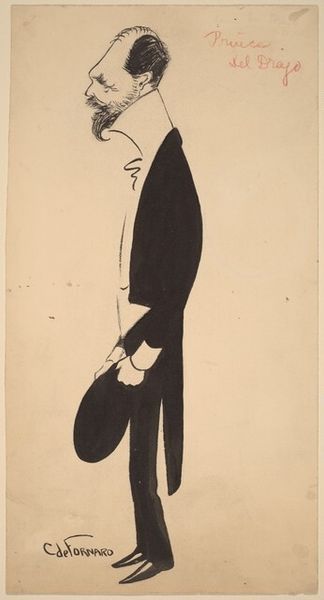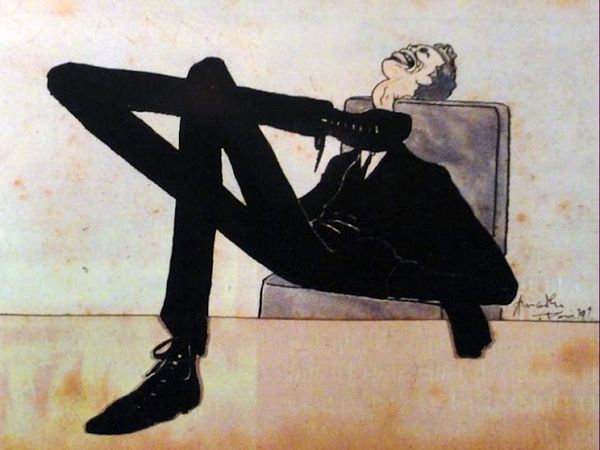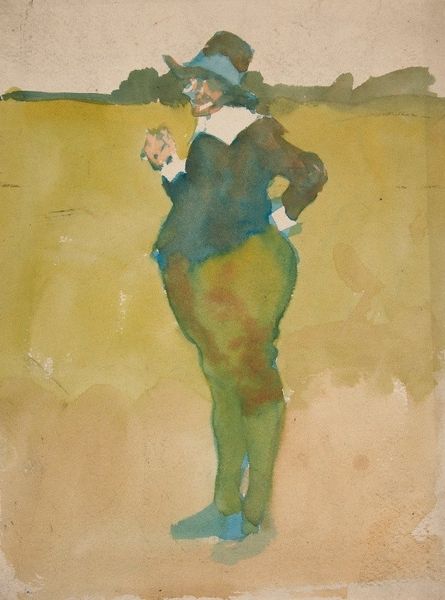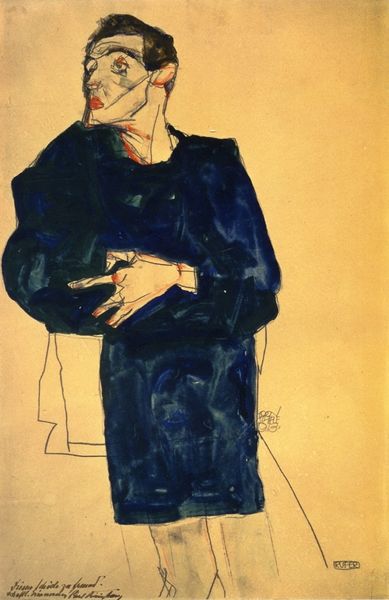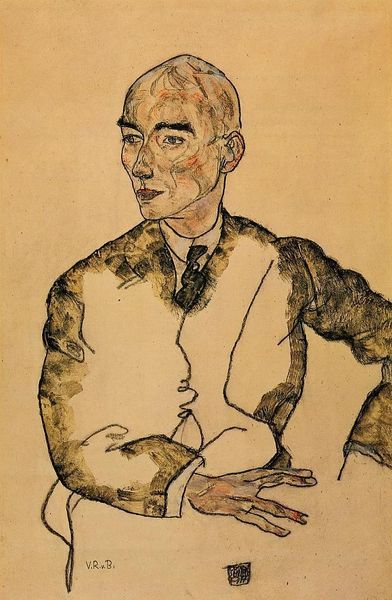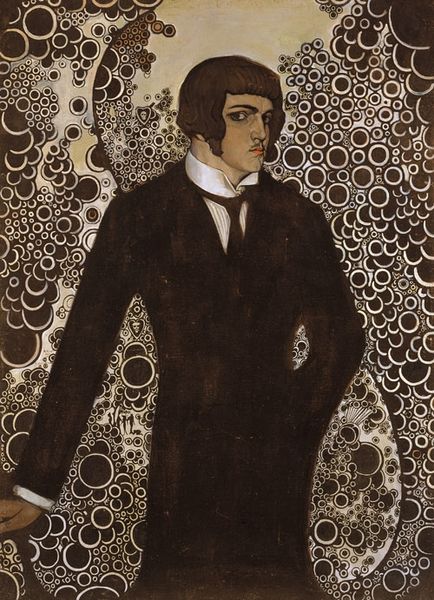
painting, oil-paint
#
portrait
#
painting
#
oil-paint
#
oil painting
#
male-portraits
#
expressionism
#
portrait art
Copyright: Public domain
Curator: Here we have Egon Schiele’s “Portrait of the Painter Max Oppenheimer,” rendered in oil paint in 1910. Schiele situates Oppenheimer with a direct gaze and theatrical posture. Editor: There’s an immediate, almost confrontational energy. The high contrast and angularity really grab you, unsettling in a way that typical portraiture of the time wasn’t aiming for. Curator: Absolutely. This work reflects Schiele's radical expressionistic approach to portraiture, challenging conventional representations of masculinity. It can be considered within turn-of-the-century Vienna, fraught with questions of identity and representation within a changing societal landscape. Schiele seeks to explore inner psychological states. Editor: The materiality supports this, doesn’t it? Look at how Schiele handles the paint. The application isn't about smooth realism. It is about this immediacy. Almost rushed or raw. The heavy black outlining emphasizes form but also feels…claustrophobic? Is that purposeful, do you think, representing social constraints, anxieties of identity? Curator: One might suggest Schiele renders Oppenheimer against societal expectations, using the artifice of painting to critique societal norms and reveal psychological tensions, very common within the era's discourse around the self and its performance. Editor: And it goes back to your point, doesn't it, about Oppenheimer’s pose as theatrical? Consider how the suit, a symbol of bourgeois identity and social standing, is reduced to blocks of dark pigment. There is little blending or modelling. Curator: Yes. It is about deconstructing not just the man, but also the very social and artistic norms of their time. Consider Schiele's biography and his complex relationships with societal and artistic circles within Vienna, giving context to the rendering here. Editor: I agree. Studying the materials and how they're worked speaks to both individual and broader social upheaval reflected in the expressionistic art and, dare I say, societal deconstruction of the era. Curator: By studying this expressionistic example we consider that an artwork provides not only a depiction but a dynamic site where identity, representation, and resistance come into play, demanding we unpack assumptions about both self and the means we use to portray. Editor: Examining this through a materiality lens gives us such a tangible link to both the artist's individual experience and the social shifts. We can really consider how it might feel for both maker and model in that moment in time.
Comments
No comments
Be the first to comment and join the conversation on the ultimate creative platform.
